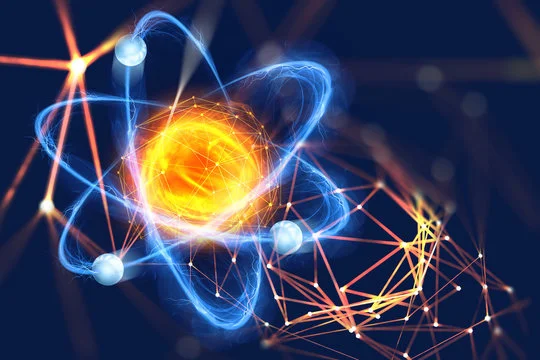
Atomic Structure Concepts Explained
The atomic structure is one of the fundamental concepts in chemistry and physics, explaining how matter is composed at the smallest level. Every substance in the universe, from the air we breathe to the food we eat, is made up of atoms. Understanding atomic structure helps in explaining chemical reactions, bonding, electricity, and even quantum mechanics.
This article explores the history, components, models, and significance of atomic structure, making it easier to understand how everything around us is built.
What is an Atom?
An atom is the smallest unit of matter that retains the properties of an element. Atoms consist of a nucleus at the center, surrounded by electrons moving in specific orbits. The nucleus contains protons and neutrons, which contribute to the atom’s mass.
Basic Components of an Atom
| Component | Charge | Location | Function |
|---|---|---|---|
| Proton (p⁺) | Positive (+1) | Nucleus | Determines atomic number & element identity. |
| Neutron (n⁰) | Neutral (0) | Nucleus | Adds mass to the atom, stabilizes nucleus. |
| Electron (e⁻) | Negative (-1) | Outside nucleus in orbitals | Determines chemical bonding & reactions. |
History of Atomic Structure
Scientists have contributed various atomic models over centuries to explain the structure of an atom.
1. Dalton’s Atomic Theory (1803)
- Atoms are indivisible and indestructible particles of matter.
- Atoms of the same element are identical.
- Chemical reactions involve rearrangement of atoms.
Limitations:
- Did not explain the existence of subatomic particles.
2. J.J. Thomson’s Plum Pudding Model (1897)
- Discovered the electron using a cathode ray tube experiment.
- Proposed that an atom consists of negatively charged electrons embedded in a positively charged sphere (like a pudding with plums).
Limitations:
- Could not explain the stability of an atom.
3. Rutherford’s Nuclear Model (1911)
- Conducted the gold foil experiment, proving that atoms have a dense nucleus at the center.
- Stated that electrons revolve around the nucleus in empty space.
Limitations:
- Did not explain why negatively charged electrons do not fall into the nucleus.
4. Bohr’s Model (1913)
- Proposed that electrons move in fixed orbits (shells) around the nucleus.
- Introduced the concept of energy levels (K, L, M, N shells).
Limitations:
- Could not fully explain the behavior of multi-electron atoms.
5. Quantum Mechanical Model (Modern Model)
- Based on Schrödinger’s wave equation, this model describes electrons as wave-like particles that exist in probability clouds called orbitals rather than fixed paths.
- Introduced quantum numbers to define electron positions.
Atomic Number, Mass Number, and Isotopes
1. Atomic Number (Z)
- The number of protons in an atom’s nucleus.
- Determines the element’s identity (e.g., Carbon (C) has Z = 6).
2. Mass Number (A)
- Sum of protons + neutrons in the nucleus.
- Formula: A = Z + N (where N = neutrons).
3. Isotopes
- Atoms of the same element with different mass numbers due to varying neutron counts.
- Examples:
- Carbon-12 (¹²C) and Carbon-14 (¹⁴C) are isotopes of carbon.
- Uranium-235 (²³⁵U) is used in nuclear reactors.
Electron Configuration and Energy Levels
Electrons do not move randomly but occupy specific energy levels or shells around the nucleus.
1. Energy Levels (Shells)
- Electrons are arranged in K, L, M, N shells, following 2n² rule, where n is the shell number.
| Shell | Maximum Electrons (2n² Rule) |
|---|---|
| K (n=1) | 2 |
| L (n=2) | 8 |
| M (n=3) | 18 |
| N (n=4) | 32 |
Example: Sodium (Na) has atomic number 11, so its electron configuration is 2, 8, 1.
2. Orbitals and Quantum Numbers
- Electrons are located in orbitals (s, p, d, f), based on quantum mechanical principles.
- Quantum numbers define the unique position of each electron in an atom.
| Quantum Number | Symbol | Defines |
|---|---|---|
| Principal (n) | n | Energy level (shell) |
| Azimuthal (l) | l | Subshell (s, p, d, f) |
| Magnetic (mₗ) | m | Orientation of orbital |
| Spin (mₛ) | s | Electron spin (+½ or -½) |
Chemical Bonding and Atomic Structure
Atomic structure influences how atoms combine to form compounds.
1. Ionic Bonding
- Electrons are transferred from one atom to another.
- Example: Sodium (Na) donates an electron to Chlorine (Cl) to form NaCl (table salt).
2. Covalent Bonding
- Electrons are shared between atoms.
- Example: Oxygen (O₂) forms a covalent bond by sharing electrons.
3. Metallic Bonding
- Electrons form a "sea of electrons" around metal atoms, making metals conductive.
Applications of Atomic Structure in Real Life
Understanding atomic structure is essential in various fields:
- Chemistry – Predicting chemical reactions and periodic table trends.
- Physics – Nuclear energy, quantum mechanics, and spectroscopy.
- Medicine – Radioactive isotopes in cancer treatment.
- Technology – Semiconductors and microchips in computers.
- Astronomy – Studying elements in stars and planetary formation.
Frequently Asked Questions (FAQs)
1. Who discovered the atomic structure?
- John Dalton first proposed the atomic theory, but Ernest Rutherford discovered the nuclear structure of atoms.
2. What are the three subatomic particles?
- Protons (positive), Neutrons (neutral), and Electrons (negative).
3. What is the importance of quantum numbers?
- Quantum numbers define the exact position and energy of an electron in an atom.
4. What is the difference between isotopes and ions?
- Isotopes have the same number of protons but different neutrons.
- Ions are atoms with a positive or negative charge due to electron loss or gain.
Conclusion
Understanding atomic structure is essential for studying chemistry, physics, and materials science. The atom’s structure determines chemical behavior, bonding, and properties of elements. From ancient atomic theories to modern quantum mechanics, our knowledge of atoms has revolutionized technology, medicine, and space exploration.